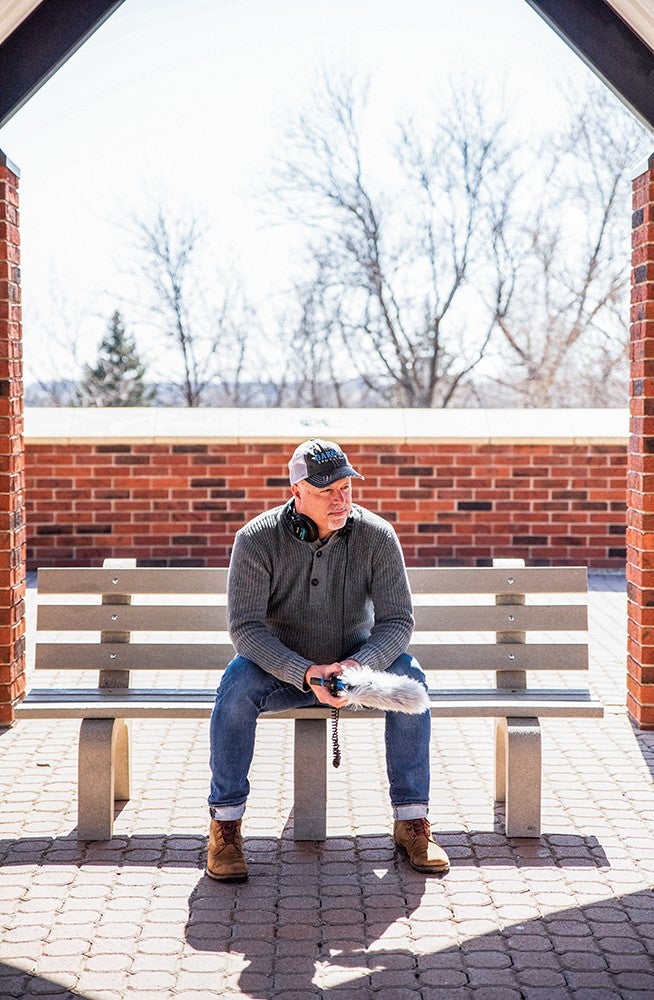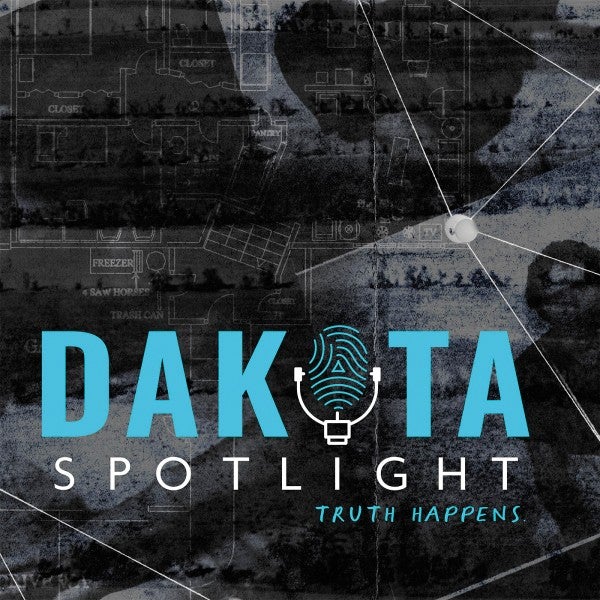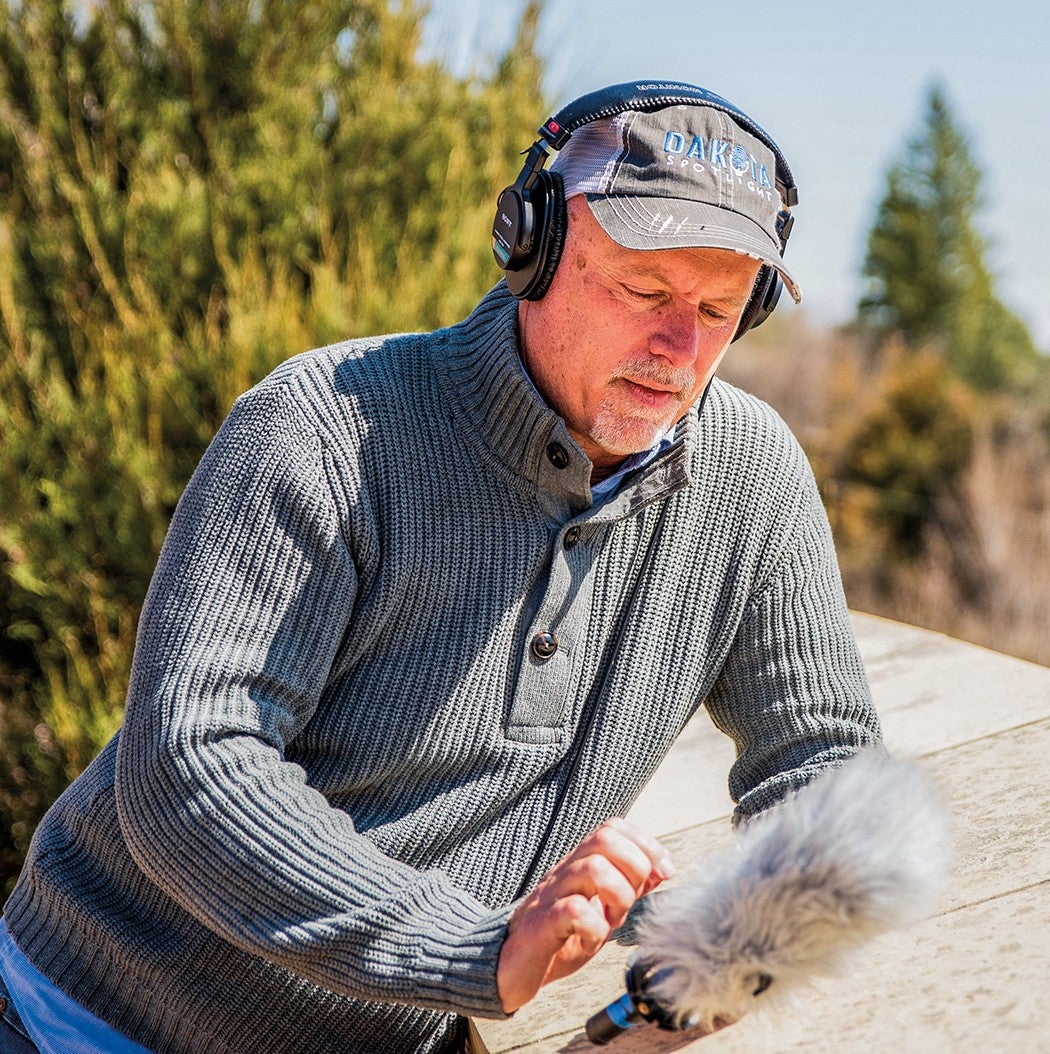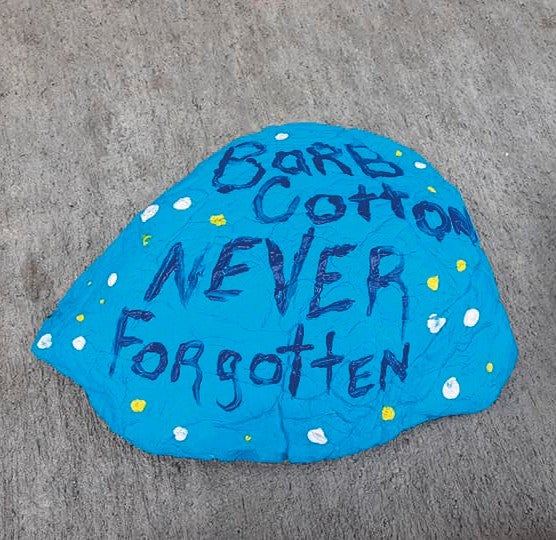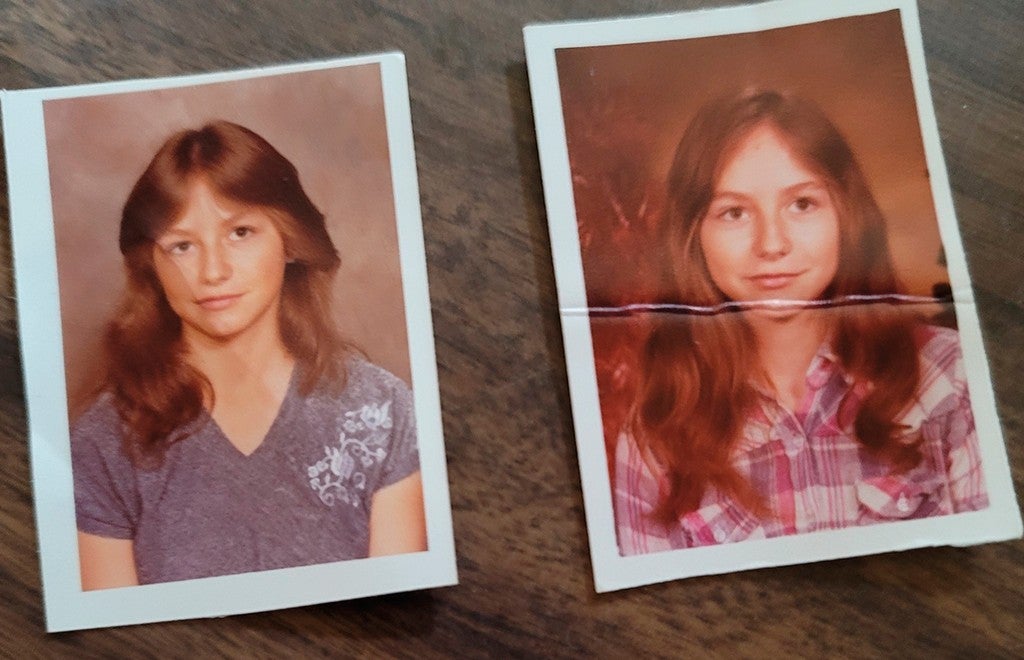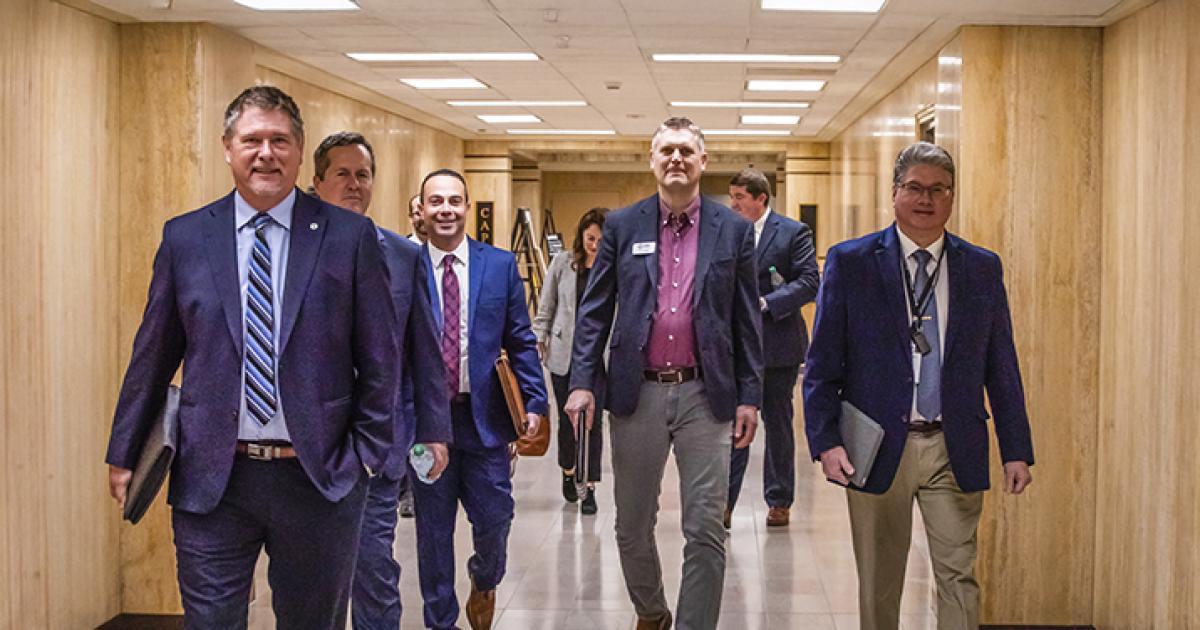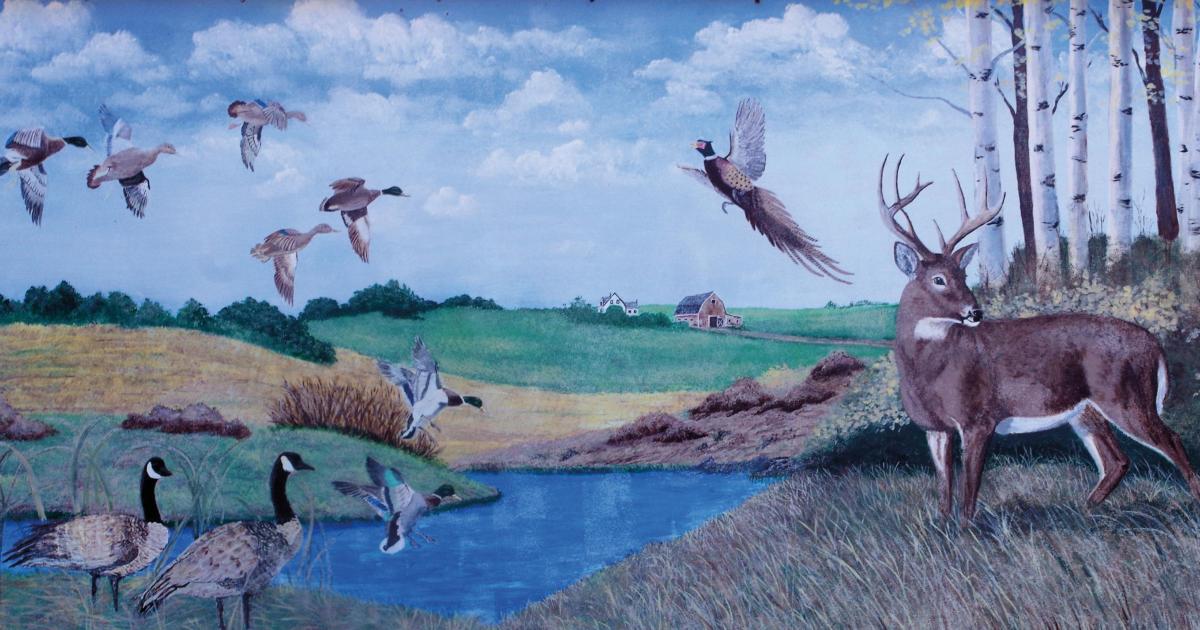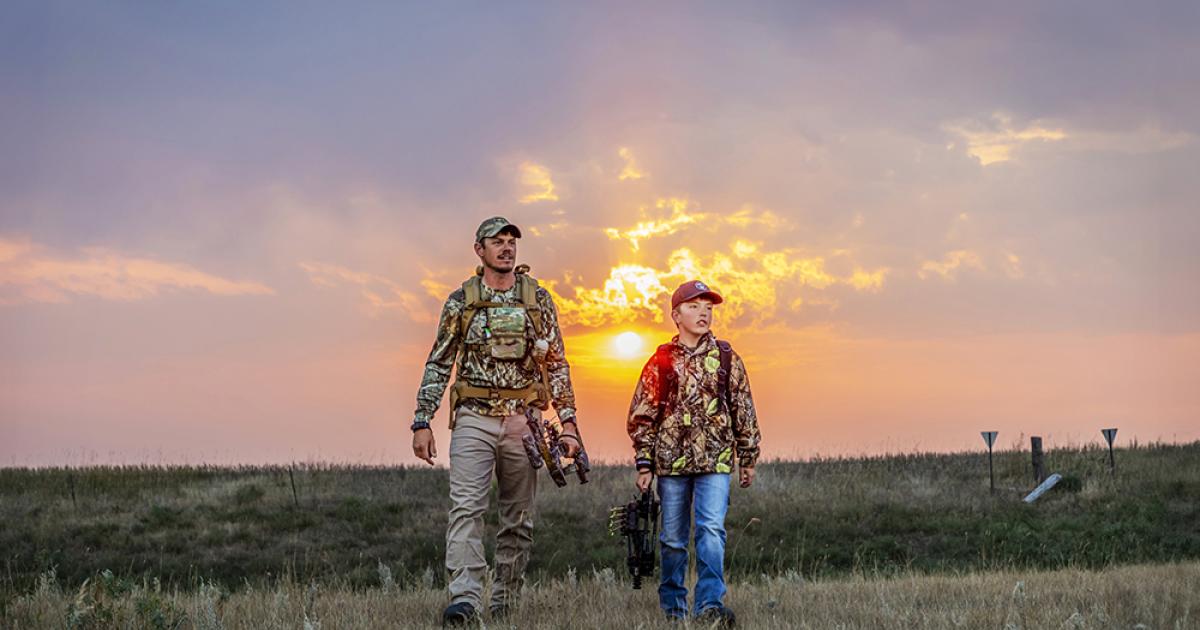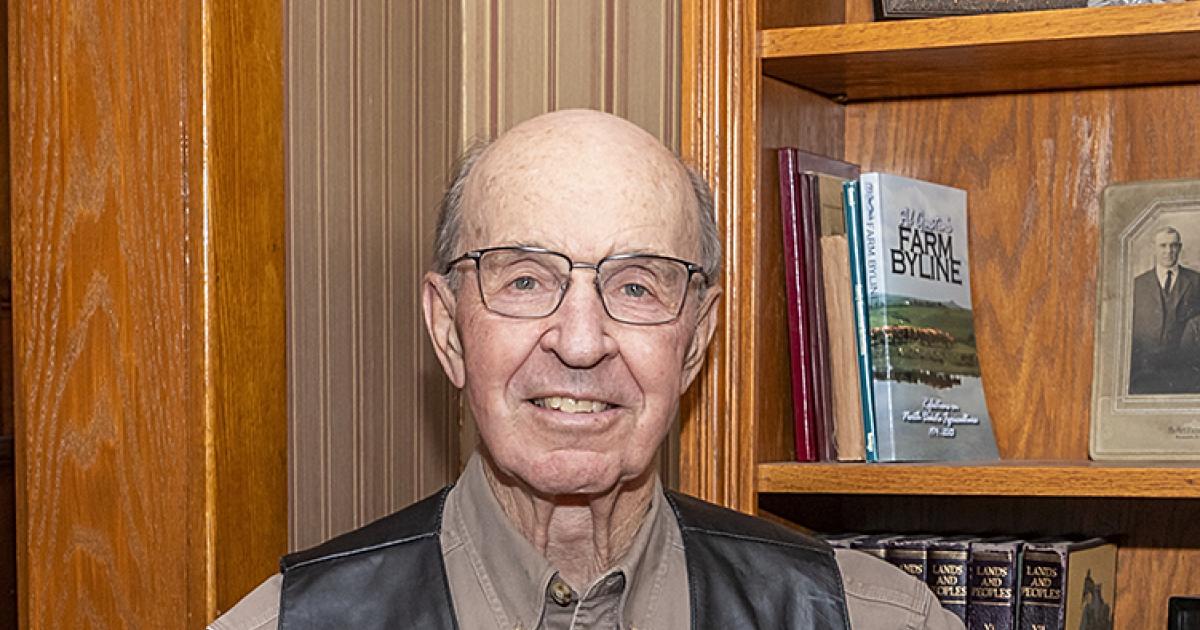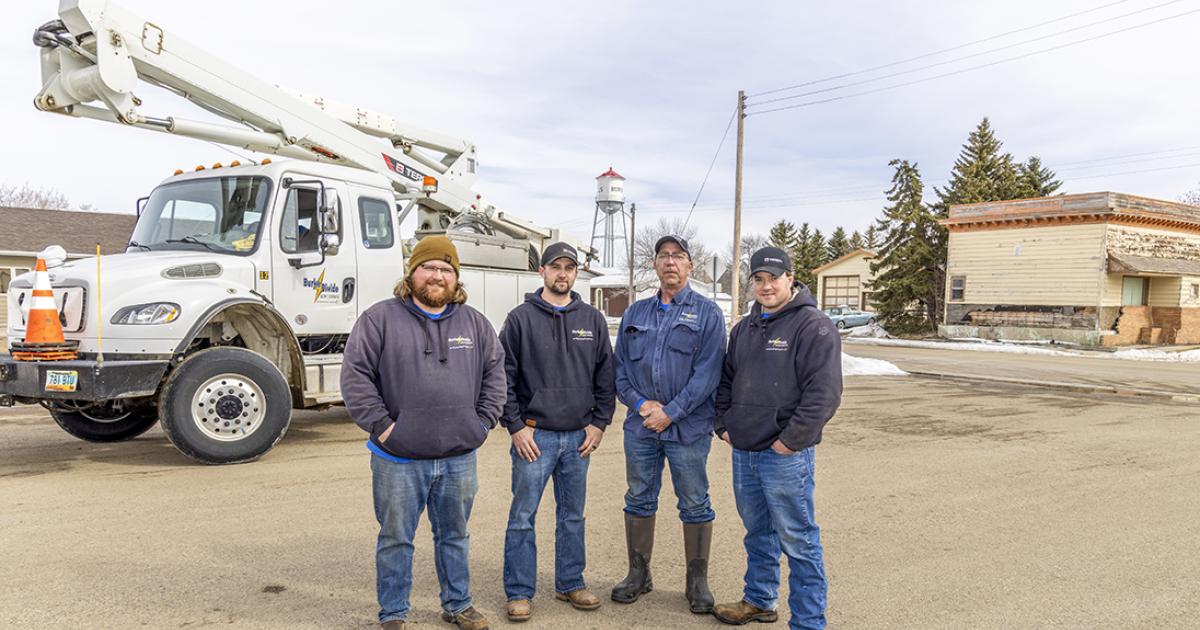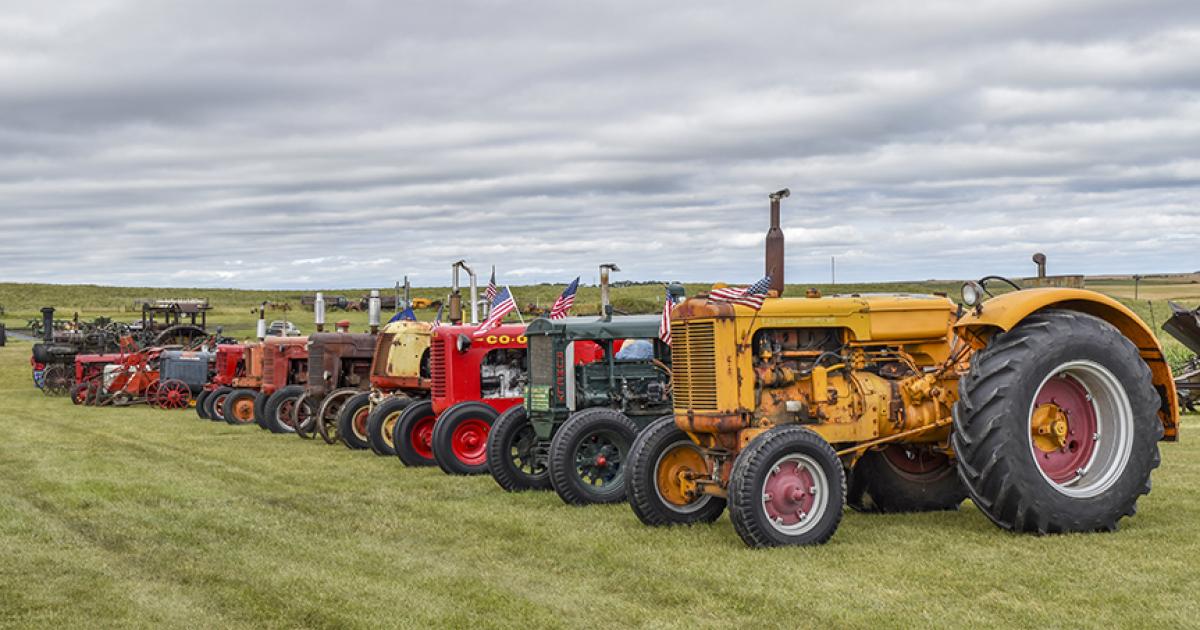How one man with a microphone uses new mediums to tell old stories
Story and photos by Katie Ryan-Anderson
February 2019 was two years, four months ago. For some, it feels like a lifetime ago. The world didn’t speak much of pandemics in February 2019 and “Corona” referred to an adult beverage.
The University of Jamestown and its new mechanical engineering program graced the February 2019 cover of North Dakota Living. Farm Journal named Chris Adams of Grand Forks a finalist for the Top Producer of the Year award.
And on Feb. 27, 2019, the National Weather Service recorded 10 degrees as the highest temperature in Velva, while the Fargo Forum featured Janet Gaynor, an actress who played a young woman from North Dakota in the original 1937 version of the film “A Star Is Born.”
Also on that day, the “Dakota Spotlight” podcast shared what sounded like an outlandish story from a North Dakota bar.
Podcasts are like radio shows popular in the 1940s and 1950s. Unlike radio, however, podcast listeners download episodes to their tablets or smartphones and listen at their convenience.
The “Dakota Spotlight” podcast spans four decades and five North Dakota communities. Each season is a quest for answers regarding the strange or mysterious deaths and disappearances of North Dakota residents.
From his home in Hebron, the podcast’s host, James Wolner, searches for answers.
Though it made the front page of zero publications, the life and untimely death of the late Victor Newberry, of Glen Ullin, was the subject of the first season of “Dakota Spotlight” podcast episodes. Law enforcement found Newberry’s body on Dec. 27, 2014, outside of his running vehicle in an isolated Morton County ditch. Newberry died of hypothermia, according to his death certificate. Officials did not suspect foul play.
Though the case was closed, the rumor mill was not.
“I’d never met Victor and I’d never written any sort of news-type article. But Victor’s story lingered with me, even in my dreams,” Wolner said. “He was also an example of the larger question: If we can’t collectively agree on what is a fact and what is not, what does that say about our society?”
Cold state, cold crime
Today, Wolner is producing season five of the “Dakota Spotlight” podcast, sharing the story of one of North Dakota’s oldest cold cases. “A Better Search for Barbara'' features the story of Barbara Cotton. The 15-year-old disappeared from her hometown of Williston on April 11, 1981.
The stories of individuals like Barbara are as unique as his own.
Though Wolner lives in Hebron, he grew up in northern California and spent summers in central South Dakota. After studying English and photojournalism in college, Wolner moved to Stockholm, Sweden, where he helped raise two daughters. He thinks of those daughters often, especially as he produces “A Better Search for Barbara.”
“It doesn’t matter if it’s 40 years or 100 years,” he said. “As a parent, I would never give up for my girls and I won’t for Barbara, either. You don’t stop looking for a missing daughter. Barbara deserved better.”
Once his daughters had grown, Wolner returned stateside in 2012, living in Boulder, Colo., before moving to Hebron in 2013. He took a job as a database programmer for National Information Solutions Cooperative (NISC) in 2018, researching and recording the podcast in the early mornings before and evenings after work. By April 2020, he took on podcasting full time.
“I’m fortunate,” he said. “Even before this was my full-time job, I couldn’t stop myself from pursuing these stories. People deserve justice.”
In addition to the power “Dakota Spotlight” gives to victims and their families, the podcast also powers North Dakota.
“Rural areas need connections, and ‘Dakota Spotlight’ is one of them,” says Bridgette Readel, member of Cass County Electric Cooperative. Readel grew up a member of KEM Electric Cooperative near Wishek. She heard about Dakota Spotlight after season two, which features the 1976 Zick family of Zeeland. “My family is plugged in to ‘Dakota Spotlight.’ At holidays, we talk about the podcast and the memories it triggers from our childhoods.”
Cheryl Donoven of rural Trenton agrees. The Mountrail-Williams Electric Cooperative member said “Dakota Spotlight” appeals to all generations. At a spring family gathering, teenagers and septuagenarians alike disconnected from their devices and connected over this story.
“You don’t have a lot of that anymore,” she says.
Donoven says she’s grateful for what the podcast has done for her family. She also appreciates the support for Barbara’s family.
“I can’t imagine what the Cottons are going through,” she says. “They’ve been living through this for 40 years. Plus, they’ve lived through the hurt of thinking no one cared.”
“Caring” is something one electric cooperative member hears when he listens, especially to “A Better Search for Barbara,” which is dedicated to Wolner’s daughters and daughters everywhere.
Chief U.S. District Court Judge for the District of North Dakota, Peter Welte, member of Nodak Electric Cooperative, listens when driving to work or while farming near Northwood. He appreciates the stories of North Dakota and the podcast’s quest for authenticity.
“Sometimes when you do this, when you assiduously and ruthlessly seek the truth, then naturally what has to happen is that you hold some people to a higher standard than what others are held to. You’re trying to find out veritas,” Welte says.
Amplifying voices
Though the individuals featured in each podcast change from season to season, one character remains the same – the state of North Dakota. Whether it’s Fargo-Moorhead and Zeeland of the 1970s, Williston of the 1980s, Bismarck of the 1990s or present-day Morton County, the history and geography of each season’s location takes center stage in each podcast.
“I want to immerse listeners in the true crime as well as the environment, time, sounds and smells. I dive in so I can communicate the full story,” he says, pointing out his podcast limits gore and sensationalism. Instead, it focuses on compassion, ethics and detail.
Moving forward, Wolner says he wants to teach people how to research open records and tell their own story.
“I don’t want to be the voice for other people. I want them to be their own voices,” he says. “I hope people realize they can do what I did and seek answers on their own. This is important to me and it's important to our rural state.”
To learn more about “Dakota Spotlight,” visit www.dakotaspotlight.com(link is external) or follow on Facebook at www.facebook.com/dakotaspotlight(link is external).
Listen anywhere you get your podcasts.
Katie Ryan-Anderson is a freelance writer, former co-op communicator and podcast fan. She is a member of Dakota Valley Electric Cooperative and lives in rural Marion with her husband and two boys.
What is a podcast?
A podcast is a digital audio file, often a story told for listeners. Podcasts are all sound, no images. Some people remember the days before television and gathering around the radio for an evening program. Podcasts are like that, only they are available online, using an internet-connected device like a computer, tablet or smartphone.
Listen to podcasts online, like “Dakota Spotlight” at www.dakotaspotlight.com(link is external), or through streaming applications, like iHeart Radio, Spotify, Stitcher or the podcast app on Apple and Android devices.
LegeNDary Listening
The “Dakota Spotlight” podcast spans four decades and five North Dakota communities. Each season is a quest for answers regarding the strange or mysterious deaths and disappearances of North Dakota residents.
1. Victor Newberry, Glen Ullin: Police found a man named Victor Newberry dead next to his running pickup truck outside of Glen Ullin in December 2014. Law enforcement said “natural causes” and “no foul play involved,” but locals had other ideas.
2. The Zick Murders, Zeeland: In July 1976, 65-year-old Wade Zick was murdered alongside his wife, Ellen. Three local young men were arrested and convicted of the crime. The event sent shockwaves throughout the small town, its rural county and the Upper Midwest.
3. ”The House on Sweet and Seventh,“ Bismarck: In 1998, 18-year-old Brian Erickstad and his friend, 27-year-old Robert Lawerence, murdered Brian’s adoptive parents, Barbara and Gordon Erickstad. It should have been easy to find answers.
4. “Chasing Billy,” Fargo-Moorhead: On a Sunday afternoon in the summer of 1978, a young man canoeing in the Red River found two plastic garbage bags – and half of a human body inside each one. The body was identified as 21-year-old William Wolf Jr., a local man who had attended high school in nearby West Fargo. To this day, Wolf’s murder remains unsolved. It’s time to find out what really happened.
5. “A Better Search for Barbara,” Williston: Barbara Cotton was 15 years old when she was last seen walking home from a restaurant in April 1981. She remains one of North Dakota’s oldest, unsolved cases. Listen as “Dakota Spotlight” interviews friends, family and law enforcement, some for the first time in 40 years.


